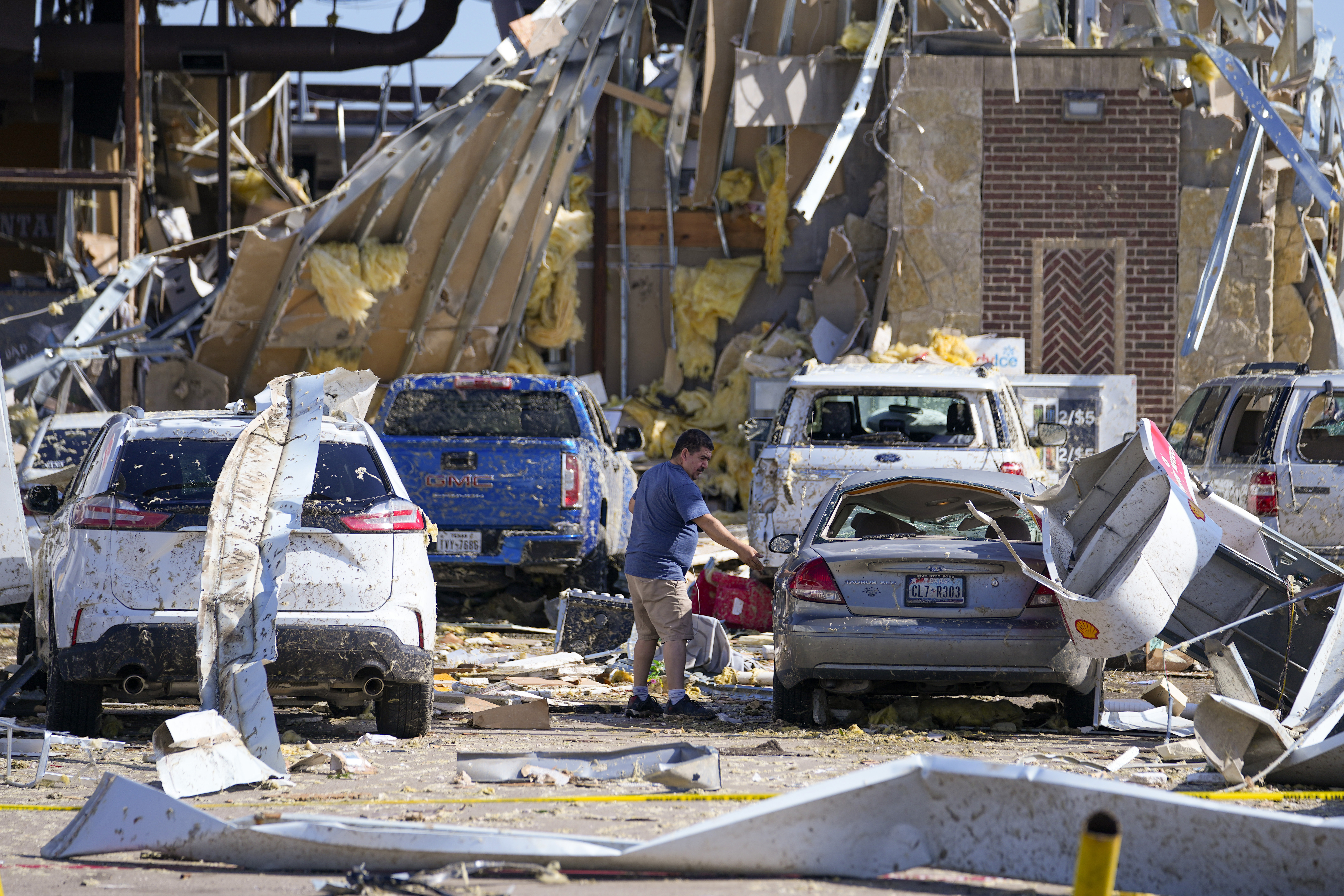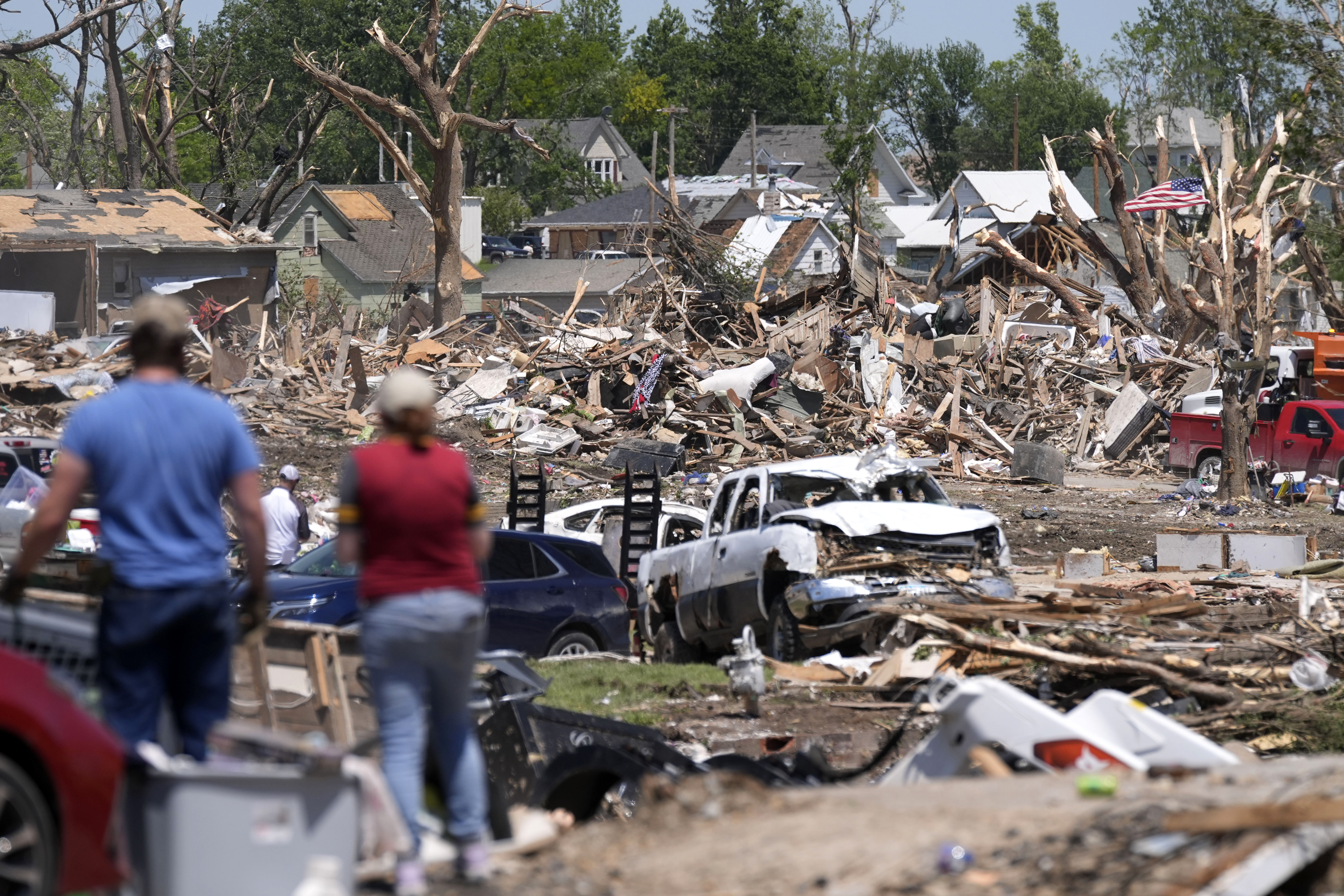
Record warmth this winter fueled a deadly tornado outbreak across parts of Ohio, Kentucky, Indiana and Arkansas in March. Then tornadoes killed multiple people and injured at least 35 others in Iowa. Recent twisters have even struck in places unaccustomed to them, such as one near Los Angeles in 2023 that tore apart rooftops and injured one person.
When a tornado takes aim at your house, and the sirens are sounding, the dogs are barking and the children are screaming, there are some last-minute precautions that could save the lives of you and your loved ones.
But experts also recommend a few simple steps to prepare well before the twister is on your doorstep. Here's a look at some tornado safety tips:
How do I get emergency updates?
Weather radios, specialized receivers that get alerts and can sound an alarm in an emergency, are something that every home and business should have, said Rick Smith, the warning coordination meteorologist at the National Weather Service’s forecast office in Norman, Oklahoma.
“It does feel like old-school technology, but they are life-saving devices,” Smith said.
Radios can be particularly valuable in the South, where many tornadoes strike at night when people are sleeping. “This can wake you up in the middle of the night with the alarm,” Smith said.
The National Weather Service encourages people to have multiple ways of being warned, which can include weather radios, a cellphone app or other method in case power is lost. Redundancy of methods is key, Smith said.
Where should I take shelter?
Feeling out of the loop? We'll catch you up on the Chicago news you need to know. Sign up for the weekly Chicago Catch-Up newsletter.
The ideal places to take shelter are enclosed, underground shelters and basements, or a safe room above ground that's designed to withstand tornadic winds.
But many people don't have that option — in Oklahoma, for example, the clay soil makes building basements expensive, so lots of homes don't have them.
If you have to be above ground in a tornado, “your goal is to put as many walls and barriers between you and the outside as you possibly can,” Smith said.
Smith recommends using mattresses, couch cushions or other sturdy items to protect yourself from deadly flying or falling debris. Bicycle or sports helmets can provide crucial head protection, and they can be stored in a convenient place on-site. A commonly held misconception: “There's still a chunk of people out there who think you're supposed to open the doors and windows to equalize the pressure,” Smith said.
It's also important they are ready when you have just minutes or seconds to prepare. A car seat can help protect a small child, Smith says and can be brought inside ahead of time.
How can I keep my home safe?
Recent research has shown that closing your home’s garage door and all interior doors could ease the high winds somewhat by compartmentalizing them, according to Smith. Doing so is recommended during thunderstorms and tornadoes by the Insurance Institute for Business and Home Safety.
That’s the opposite of a commonly held misconception: “There’s still a chunk of people out there who think you’re supposed to open the doors and windows to equalize the pressure,” Smith said.
It’s also important to prepare for the tornado’s aftermath, when you might emerge from a home or shelter to find downed trees and power lines and shredded buildings. Dress for disaster, such as wearing long pants and sturdy shoes, to make it easier to safely navigate the treacherous terrain.
An emergency kit of essentials like drinking water and nonperishable food items is also a good idea.
With the threat of strong tornadoes in the forecast once again for Kansas, Oklahoma and Texas on Saturday, the weather service urged people to have emergency supplies, know where their safe places are and have a family communication plan.
What should I do if I'm driving?
Smith anticipates fielding questions about how to seek shelter when driving, since the trailer for the upcoming Hollywood film “Twisters” shows the characters sprinting toward a highway underpass as a tornado approaches.
If you are in a car or truck, “you really don't have a lot of good options at that point,” Smith said. “Try not to get caught in that situation.”
The best thing to do is get off the road and try to find a building. If there's nowhere to go, there are no guaranteed safe options.
When it comes to ditches, overpasses or staying inside a car, “people have survived doing all of those, people have died doing all of those,” Smith said. “I've seen cars rolled up into unrecognizable balls of metal.”



